Compiled by Karen Furst, 2006
Updated 2016
The Styers story begins about 1875 when John Franklin Styer sold his country store in Gwynedd, Pennsylvania, to purchase an 85 acre farm in Concordville where he operated a dairy. His sons Jacob and Walter later divided the farm, each pursuing his own business endeavors. Jacob worked as a florist in Philadelphia while operating greenhouses on his small part of the farm. Walter took possession of the larger part of the farm which he began converting to a nursery in 1890. By 1900, however, he had decided to relocate to New York to open nurseries there. Jacob gave up his city job to operate the combined farm, turning cultivated fields into vegetable, fruit, and flower crops. Jacob’s death in 1924 forced his son Franklin to leave school prematurely and return to take over. Franklin operated the business until 1973 when he sold it to Russell Jones who in turn sold it to William Simeral in 2004. Both Franklin Styer and Russell Jones were retained in advisory positions, Styer until his death in 1996, and Jones until early 2008 when the business was sold for an undisclosed price to Urban Outfitters, a Philadelphia-based retailer that operates 242 stores by the names Urban Outfitters, Anthropologie and Free People stores. New to the garden center business, Urban Outfitters created Terrain, an upscale garden center described as a “celebration of nature” and “inspired by the idea of merging house and garden to create an experience for the senses.”
The People
John Franklin Styer (d. 1892)
Purchased the Concordville property in 1875 and started a dairy farm.
Walter Styer
Began the nursery in 1890. Moved to New York in 1900.
Jacob Styer “Jake” (d. 1924)
Introduced mushroom culture in 1897. Took over the farm from his brother Walter in 1900 and continued developing the nursery business. He was the first roadside marketer in the area.
John Franklin Styer “Franklin” (1900-1996)
Franklin ran the business from the year of his father’s death in 1924 until his retirement, during which time he became a horticulturist of national reputation. In 1933 he published a book called Modern Mushroom Culture, which is still available today on Amazon. He was a long-time member of the Pennsylvania Horticultural Society and founded the Gold Medal Plant Award to promote ornamental woody plants with extraordinary garden merit.
Obituary
From: http://articles.philly.com/1996-01-08/news/25654356_1_mushroom-capital-farm-wagon-father#sthash.ykfMJEsc.dpuf
J. Franklin Styer, 95, Of Concord; Had Owned Concordville Nursery
By Kay Raftery, INQUIRER CORRESPONDENT
Posted: January 08, 1996J. Franklin Styer, 95, former owner of J. Franklin Styer Nurseries in Concordville and a resident of Concord Township for 88 years, died of congestive heart failure Jan. 1 at his home in Bend, Ore.
His father, Jacob, established the nursery in 1890, and Mr. Styer started working there after college. When his father died in 1924, he became the proprietor of the business.
The business was sold in 1973 to Russell O. Jones, but Mr. Styer maintained a role in its operation as chairman emeritus of the board until he died.
Mr. Styer was born in Concordville, attended Swarthmore College, and graduated from Pennsylvania State University in 1922. In 1930, he received a doctorate in botany from the University of Pennsylvania.
His daughter, Ann Aines, said her grandfather started out with a farm and soon added greenhouses and nursery stock. “He also grew peonies, and when my father started there, he established a major cut-flower business,” Aines said.
“My father and his dad also grew mushrooms. You can reasonably say they were among the earliest mushroom growers in the county.”
Jones called Mr. Styer an incredible man.
“He was so civic-minded, and did so much for this area. For years, he did research on mushrooms and helped make Kennett Square the mushroom capital of the world.”
Aines recalled spending summers in the Smoky and Blue Ridge Mountains while growing up.
“My father loved to visit small farms and talk to the farmers who were growing native plants and find out about them,” she said.
Mr. Styer was affiliated with many professional associations. He helped organize the Mushroom Growers Association of Pennsylvania in 1938, and the National Landscape Association in 1939.
He was chairman of the Nomenclature Committee of the American Association of Nurserymen for 30 years. He was active in the Pennsylvania Horticultural Society and received its Distinguished Achievement Medal in 1979.
In 1988, he received the Arthur Hoyt Scott Garden and Horticulture Award from Swarthmore College.
Mr. Styer was a founding member of the Concord Area Business-Professional-Industrial Association, the Concord Township Taxpayers Association, and the Delaware County Conservation Board. He served on the Birmingham Township Planning Commission and was a member of the U.S. Selective Service Board of Appeals.
His daughter said he had a special interest in education, and established a professorship and scholarships at Penn State. He also founded a research program on the peony there.
He wrote for many trade magazines. One article about the early days of the nursery included this anecdote:
“By 1912 I would come from school, load a farm wagon with trees (using our hired help) and go to Wilmington, set up on a street corner and take in money while my driver pulled off the trees. This lasted four or five years until the cops began chasing us out and we ran out of spruces anyhow.”
Mr. Styer’s first wife, Alice Siegfried Styer, died in 1953. They had been married for 29 years.
In 1954 he married Agnes Taylor. She died in 1991.
In addition to his daughter, he is survived by a son, John F. Styer Jr.; two grandchildren; and six great-grandchildren.
A memorial service will be held at 2 p.m. Feb. 3 at Concord Friends Meeting, Concord Road and Route 1, Concordville. Burial was private.
The family suggests contributions to Scott Arboretum of Swarthmore College, 500 College Ave., Swarthmore, Pa. 19081.
John Franklin Styer, Jr. “Jack” (ca. 1928-2015)
Born in Philadelphia, Jack was the son of Franklin and Alice Styer. Jack graduated from Penn State University with a degree in horticulture. He started in the business in 1950 and continued until 1962 when the business was split.
STYERS TIMELINE
Some of the more important dates in the Styer history.
- 1875
- Quaker John Franklin Styer sold his country store in Gwynedd, PA, and purchased an 85-acre farm in Concordville where he operated a dairy. His two sons, Jacob and Walter, attended Maplewood Academy.
- 18xx
- Jacob married Kathrynne R. Paschall. He obtained a job at a wholesale florist in Philadelphia and at the same time, built up a greenhouse on a smaller part of the family farm.
- 1890
- Styer’s Nurseries started in business in 1890 when two brothers, Jacob J. Styer and T. Walter Styer, divided their father’s farm into two parts. Jacob built several greenhouses and went into the growing of flowers, and Walter opened the “Concordville Nurseries.”
- 1892
- Quaker dairyman John Franklin Styer died.
- 1900
- J. Franklin Styer, grandson of Quaker dairyman John Franklin Styer, born.
- 1902
- In 1902 Jacob took over the entire farm, including the nurseries. Walter’s sons and grandsons are now well-known nurserymen and orchardists in Bucks County.
- 1912
- Jacob Styer, the originator and builder of the American mushroom industry, imported supplies for such until about this year.
- 1913
- J. Franklin Styer, 13 years old, started a roadside market along Baltimore Pike (U.S. Route 1).
- 1922
- Jacob Styer took his son, J. Franklin Styer, into partnership in 1922, with the name J.J. Styer & Son. J. Franklin Styer graduated from Penn State University with a degree in Agricultural Chemistry.
- 1924
- Jacob J. Styer died.
- 1926
- Thompson V. Palmer, Penn State graduate in botany, joined his cousin J. Franklin Styer. He was manager of the roadside market and garden center until 1954 and then stayed on as a landscape designer and consultant.
- 1930
- The landscape service department was begun by Samuel R. Bucknell.
- 1937
- Roland Taylor joined the firm from the U. of New Hampshire.
- 1940
- Starting this year, additional farms for the growing of mushrooms, peonies, and plants were purchased in Concordville and Faggs Manor, Pennsylvania; Port Royal, Virginia; North Carolina; Geneva, New York.
- 1950
- John F. Styer, Jr., (Jack) became a partner with his father J. Franklin Styer after graduating from Penn State with a degree in Horticulture. The name Styer’s Nurseries was made official.
- 1954
- J. Richard Kauffman joined the landscape service department this year (Penn State graduate).
- 1956
- Walter P. Quintin joined the landscape service department this year (Penn State graduate).
- 1962
- A rift developed between J. Franklin Styer and his son Jack and the business was split up. Jack became the sole owner of the garden center while his father retained the landscape division and the peony business.
- 1973
- Russell Jones purchased the business from J. Franklin Styer who took a position as chairman emeritus of the board until his death.
- 1982
- The peony business was sold to a nephew of J. Franklin Styer.
- 1988
- Darrell B. Lewis purchased the larger nursery land acreages to commence a new firm, Styer’s Wholesale Nurseries.
- 1996
- J. Franklin Styer died of congestive heart failure at his home in Bend, Oregon, on January 1, 1996. He was 95 years old.
- 2004
- William Simeral rejoined Styer’s in a transitional year before purchasing the business.
- 2005
- William Simeral became the owner of J. Franklin Styer Nurseries.
- 2008
- The business was sold to Urban Outfitters and transformed into an upscale garden center called Terrain.
THE NAME OVER TIME
Concordville Nursery (1890-1922)
J.J. Styer & Son (1922-1950)
Styer Nurseries (1950-1964)
J. Franklin Styer Nurseries (1964-2008)
Terrain at Styer’s (2008-present)
THE GROUNDS OVER TIME
LIFE IN THE STYER FAMILY
The information in this section came from the 1990 one hundred year celebration exhibit that Styers held in the museum and must have been written by J. Franklin Styer.
THE ICE HOUSE
In 1900 the Jacob Styer family moved across the road into the big three story house his mother had built with her inheritance from John Franklin Styer. She had moved into it with the Walter Styer family, leaving us the old house. But Walter moved to Geneva, New York, to a job with the Smith Company, which was then one of the country’s largest.
That side of the farm, seventy acres, was a 20 cow dairy with bull, and was equipped with a large red barn. A hired “farmer” lived in a small house behind the barn. At least half the acreage was in nursery stock, with a storage and service building close behind the big house.
Jacob kept four horses in the barn, and then built a wagon house between that and the house. From the road there were thus four driveways. The wagon house was dug twelve feet deep and stone walled inside and was filled with ice each winter from Brinton’s Dam. Until electric refrigerators, we carried ice daily to our ice-box. The ice was cut when six inches thick.
The ice house was a real sign of importance in the community. Of course we never thought about that, just took it for granted. After all, my father was a township supervisor.
We had watermelons, apples, fish, and many other things from the icehouse, carried up an old ladder from deep in the hole.
Oddly enough, as the last ice melted, there in the straw we would find a strange assortment of things forgotten there by us and the neighbors. The wagon house became the Garage, then a double Garage, and held an assortment of every kind of tool you ever saw.
PHEASANTRY
Jacob Styer was a hunter. He kept setter and pointer dogs and regularly took a week to hunt grouse or quail in the late fall.
About 1903 the hunting clubs began importing the English Pheasant. It had been brought there from India. Styer was always an experimenter and got a group of three pairs. He built a pen of wire about 50 feet square. It had a big shade tree in the middle. He put a pile of tree branches around this tree for the pheasants to nest in.
For about four years I was the key person in this venture, for I was the only one small enough to crawl in and rob the nests of eggs, which I had to do daily.
The eggs were packed in cotton and sent by express to Pennsylvania hunting clubs. From that start the whole country is now occupied by this interesting and beautiful bird.
The old pen is now part of the parking behind the company office.
HOMING PIGEONS AT CONCORDVILLE ABOUT 1908
Almost the worst memory of my youth was pigeons, which you may not have suspected. Jacob Styer was quite wild bird oriented, but pigeons were just dollars and cents. A structure of wire mesh was built two floors high across the 80 foot barn front, on the south side. This allowed two lots of pigeons to fly up to 80 feet at will. Inside was a series of nesting area on the two floors, and the birds were given feed and water there.
I believe we had 2,000 pigeons. This resulted in 25 to 30 squabs to be killed and de-feathered weekly. And it always turned out that this was done after school. This business appeared to belong financially to my older sister somehow. She cut the squabs’ throats from inside the mouth so that it would not show in the market.
Then I picked feathers.
SELLING PEONIES
Jacob Styer, having worked some years in the Philadelphia wholesale flower markets up until 1990, established a good sized greenhouse plant and marketed flowers in that place. I recall his visits in and about 1910 to Wm. J. Baker and the Pennock firm.
As a modest experiment had had a small patch of peonies by 1900, but did not try to sell the flowers until 1903 or 1904. They were sent to New York wholesale florists, who dealt with them as was the custom with wild or outdoor grown flowers – dumped them out. Greenhouse growers boycotted any firm which sold outdoor flowers.
But Styer had an answer. The mushrooms he was growing, the first in the U.S., were partly being sent to Atlantic City hotels and he was well known there. The next year he sent his whole production of peonies to those hotels free. They created a sensation, to the extent that New Yorkers demanded peonies in that market, and the use of peonies in New York was established.
At the same time the retail florists in the Northeast discovered that peonies were the ideal flower for Memorial Day. And Styers were just far enough south that their crop could be counted on for May 30th. The main peony crop in the Northeast was from Long Island and usually came on in June. (The L.I. growers at the time were retailers who only shipped surplus to the city.)
About 1910 the average flower grower had set out a patch of peonies and the wholesale markets were glutted. I remember that the express train hauling peonies would arrive in Concordville with a carload already filled from westward, and that was daily for at least a week. Peonies came in carloads from southern Indiana to many eastern cities.
A planting of peonies invariably became weedy and the flower quality suffered. And few growers ever expected to make a lifework of one flower anyhow. So the numerous peony farms disappeared. Ours survived for one reason, we had always bought and tested new cultivars, and that led to new plantings. We had the advantage of being nurserymen and naturally built up stocks of better cultivars. While competitors were shipping a variety of discredited flowers we were adding better new ones.
By 1920 many fields of peonies had been plowed out making room for nurseries, but Styers still had twenty acres of peonies, and supplied leading wholesalers in seven cities.
INTERSTATE PEONIES
As a part of Styer’s Nurseries, the peony division outgrew the nurseries in land use. Until 1940 the peonies went on new land. There was a general idea that they could not be replanted successfully because of disease. Out policy was to move the peony business after seven years of cutting flowers and then use the land for nurseries.
At the same time it became wise to plant peonies further south and north to be able to supply the market for six weeks instead of only two. This meant renting land in Virginia and New York, or buying. Also, it involved renting refrigerated trucks each year.
The first test was in Black Mountain, N.C. That patch failed because of spring frosts in the mountain community. We moved to Charlotte and were successful there through the war period, but by 1952 decided to stay nearer to home, and located on the Rappahannock, Virginia, buying a farm.
The northern start was at Geneva, N.Y., and on rented ground, beginning in 1939. The attractive feature there, as in Virginia, was the moderated temperature near the Lake Geneva. That was successful except for poor express service. We began truck hauling from all farms as soon as the war ended. That also entailed use of cold storage to accumulate truckloads and allowed us to supply shipments of balanced cultivars.
We then purchased land at Geneva and, discovering we really could replant peonies in the same ground, we set up a nursery to supply peony plants for all the farms.
As of 1962 the peony division was split off from Styer’s Nurseries and has been run entirely separately. It has the distinction of being able to run with no payroll except when cutting flowers and planting new fields.
J. Franklin Styer Nurseries and Styer’s Wholesale Nurseries owe the peony for land whenever needed.
J. FRANKLIN STYER NURSERIES HISTORY
Below are several versions of history that were found in old files and retyped.
J. FRANKLIN STYER NURSERIES – A HISTORY
Author unknown
1966
Over 76 years in horticulture is the record of this firm, all from the same location in southeastern Pennsylvania. During that period it has changed many times to meet the needs of the public, and to emerge as a present leader in elegant landscape service.
The firm was founded by Jacob J. Styer, the father of J. Franklin Styer, in 1890. He had been trained in the Philadelphia wholesale flower market, and became a grower of flowers in the traditional greenhouse establishment of that day. His plant was located where the present greenhouses and cold frames are to be found. Mr. Styer grew the various varieties of the day including carnations, freesias, lilies, violets, snapdragons, and chrysanthemums.
He is remembered especially for his experimental ventures into crops new to America, which were truly remarkable. He was a producer, at one time or another, of sweet corn (when it was new), celery, Witloof Chicory, ferrets, Shetland ponies, water-cress, fancy pigeons, parsley, cultivated chestnuts, walnuts, filbert nuts, locust trees for posts, rhubarb for forcing, and most of the orchard fruits. He added greenhouse vegetables to his line of flowers. He was one of the first to breed the English ringneck pheasant, about 1905, before that bird was ever established in the wild. He was the first roadside marketer in the area. He also was the first grower in America to raise peonies for the wholesale flower market, a business which after 68 years is still a large feature of the firm’s business.
Jacob Styer was in addition the pioneer mushroom grower, from whose efforts the entire American mushroom industry has developed. He devised and promoted the American type of mushroom house and was the chief importer of spawn for American growers between 1900 and 1920.
By 1916 most of our greenhouses had been replaced by mushroom houses, and the mushroom was beginning to raise problems faster than its market was expanding. Jacob Styer’s son, Franklin, decided to use his college career to investigate mushroom diseases, insects, and culture, in order to solve such problems. To this end he began studies in bacteriology in the University of Pennsylvania, then in agricultural chemistry at Penn State. After graduating there in 1922, he became a partner in the business, but continued his chemical work in mushroom nutrition and a general course in botany at the University of Pennsylvania until 1932.
Jacob Styer died in 1924 and his son became the sole owner. By this time, part of the various products of the farm was being sold at a roadside market. The popularity and success of the stand was due to Thompson V. Palmer, a cousin and college friend of Mr. Styer, who managed it until 194x and used his botanical training to help build the nursery.
The firm, then called J.J. Styer & Son, had always engaged in plant growing. Back in the years 1895 to 1905 it had used the name of Concordville Nurseries. But before 1925 its plant sales were small because wholesale and mail-order sales had been reduced in favor of a large direct-shipment mushroom business. The roadside market revived the nurseries and the acreage in plants was increased steadily. It was about 1930 that hardy azaleas were introduced, and kicked off the modern vogue of home landscaping.
It was in 1930 that the firm opened its landscape department. That was in the beginning of the great depression, and service to customers who needed it became a means of keeping several loyal employees in work. From 1930 to 1942, mushrooms, peonies, fruit, vegetables and flowers went side by side with the most popular nursery products, while the firm became better and better known as an ornamental nursery.
The expanding nurseries needed more land, and to the 100 acres of the original farm 50 acres were added in 1934 and 180 acres in 1946. Peony cut-flower fields were moved from farm to farm, and ornamental stock followed. The demand for peonies extended to all of May and June, and in 1934 a field of peonies was planted in North Carolina, and in 1937 one in New York. The firm is now the largest peony grower in the United States east of Illinois, with about 25 acres at Port Royal, Virginia, 25 acres at Geneva, New York, and 50 acres at Concordvillle and Jennersville in Pennsylvania. A farm at Faggs Manor, Pennsylvania, was added to the nurseries in 1956 for ornamental stock growing, but was taken out of the firm in 1965 by Jack Styer.
The old Styer Roadside Market, formerly selling fruits, vegetables, flowers and plants, was gradually changed to a garden center in the 1940’s, selling garden supplies and accessories, with an elaborate Christmas Shop feature. This department was also sold to Jack Styer in the 1965 division, having become a merchandise shop and not an agricultural feature.
Jack is the son of Franklin Styer. He became a partner in 1950 and withdrew in 1965 to manage his own business, as described above, under the name of Styer’s Garden Center.
The present firm, incorporated in 1965, is operated from the same office and location that has been used since 1890. The headquarters farm lies on both sides of Baltimore Avenue in Concordville. A second nursery farm lies two miles East on Concord Road. The third is four miles West on Birmingham Road, where new and rare varieties are produced and studied. The fourth nursery where new facilities for irrigation have been installed is near West Grove. These farms provide practically every soil and exposure needed for producing quality plants used in the landscape service.
Many landscape firms depend solely on their designers for the excellence of their work. These ignore the essential importance of the trees and shrubs. Without plants of the right kinds with perfect root systems no arrangement will serve its purpose well. The true landscape nursery is constantly seeking and testing the best plant for each purpose, and gaining decades of experience in watching the development of plant character. Franklin Styer has grown thousands of plant varieties, has discarded the majority of them. As a technical leader in plant nomenclature, he is thoroughly versed in plant selection. He has introduced to American horticulture many valuable plants, such as the Green Island Holly, the Berberis William Penn, the Yews Chester and Delaware, the Ilex Birmingham, the Kashmir Deodar, the peony Jacob Styer.
In the field of landscape design, J. Franklin Styer Nurseries favors residential garden making. The four designers are paced by Roland A. Taylor who has been with the firm since 1938. J. Richard Kauffman joined the organization in 1955. The landscaping of homes by these men involves expert arrangement of the grounds for usefulness as well as beauty, and for permanence, too.
Policies which are aimed at community service have built the Nurseries. Local home landscaping has always been the first kind solicited. This work has consistently been sound in design and plant selection. The firm has produced nearly all the nursery stock it has used. Its employees are local and understand the problems of this kind of service. The present personnel and equipment, and the incorporation in 1965, are directed toward permanence and retaining a good reputation among the public and the profession.
STYER’S NURSERIES
Author Unknown
Date Unknown
Styer’s Nurseries started in business in 1890 when two brothers, Jacob J. Styer and T. Walter Styer, divided their father’s farm into two parts. Jacob built several greenhouses and went into the growing of flowers, and Walter opened the “Concordville Nurseries.” In 1902 Jacob took over the entire farm, including the nurseries. Walter’s sons and grandsons are now well-known nurserymen and orchardists in Bucks County. Jacob Styer took his son, J. Franklin Styer, into partnership in 1922, with the name J.J. Styer & Son.
Jacob Styer, who died in 1924, was one of the outstanding horticulturalists of his time. Never content with the traditional, he was a pioneer in a great number of new productions methods, which are now developed into industries. He was the first grower of peonies for commercial cut flowers, and this firm is today the leading Eastern producer, with farms in North Carolina, Virginia, Pennsylvania, and New York.
The American mushroom industry, which is still centered in Chester County of Pennsylvania, was founded through the joint efforts of Jacob Styer and William Swayne, who imported the first mushroom spawn from England, and were the leaders in the development of this unusual industry. They adapted English techniques to the American climate, devised buildings for mushroom culture, learned to control the insects and diseased, and built a market for the product.
Among Jacob Styer’s other pioneering activities may be mentioned the growing of the water cress, Shetland ponies, fancy pigeons, hothouse tomatoes, and various French and English vegetables such as Witloof Chicory. He was one of those who raised and introduced the English pheasant, now a common game bird. In 1902 he planted what may have been the first commercial Norway Spruce for Christmas tree cutting. The earliest roadside marketing of fruits and vegetables in this area was a Styer project.
It was the roadside establishment which brought about the increased demand for ornamental plants, and thus induced the present senior partner, J. Franklin Styer, to expand the nursery in the 1920’s and 1930’s. He had attended Pennsylvania State University and the University of Pennsylvania, with degrees received in Agricultural Chemistry and Botany, and during that period was devoting half his time to mushroom research. In addition to the nursery and general farm, there was a large mushroom growing plant, and the firm sold mushrooms in Southern resorts as far away as Miami.
Thompson V. Palmer, another Penn State graduate in Botany, joined Frank Styer in 1926. Mr. Palmer was manager of the roadside market and garden center until 1954 and is still with Styer’s in the capacity of landscape designer and consultant. The landscape service department was begun in 1930 by Samuel R. Bucknell. It now includes four designer-consultants and seven service crews, directed by John F. Styer, Jr. Roland Taylor came into this service from the University of New Hampshire in 1937, J. Richard Kauffman in 1954, Walter P. Quintin in 1956. The latter two hold Penn State degrees.
The growing of mushrooms, peonies, and plants of many kinds was integrated on the old 100 acre farm on the Baltimore Pike in Concord Township, but by 1940 these projects began to spill over into new land. Two more farms were purchased in Concordville, and peony plantings were made in North Carolina and New York. Since 1950, farms at Port Royal, Virginia; Geneva, New York; and at Faggs Manor Church in Chester County, Pennsylvania, have been added.
John F. Styer, Jr., became a partner with his father in 1950 after graduating from Penn State with a degree in Horticulture, and the name of Styer’s Nurseries, which had come to be used by the public, was made official. The producing end of the firm is now organized under James Lear, and the peony farms under John Naylor. Both of these men were graduates in Forestry from Penn State. The Garden Center is in charge of Roland Bargo, who comes from National Agricultural College with a horticultural degree.
The office management of the firm has been in the competent hands of Ruth L. Hannum for the last 14 years.
The growing establishment uses two greenhouses for cuttings and grafts, mostly made from our own varieties and strains. The stock is grown one to two years in a set of cold frames, then lined out. The home nursery is gradually being converted to specimen stock; the other two Concord farms are fully planted; and new planting is proceeding at the Faggs Manor farm. These constitute the largest retail acreage in Eastern Pennsylvania.
Introductions of the firm include the Green Island Holly, the Concord, Chester and Delaware Yews, a group of Japanese Holly clones, and the new Deodar Codar “Kashmir.” We are propagating Berberis gladwynensis, a new evergreen not yet introduced.
The landscape department has seven crews and seven trucks, and operates mostly under the direction of the four salesmen. A new loading ramp has been constructed as a result of a Lanco suggestion.
The Garden Center is already familiar to Lanco members. For a small investment we have a satisfactory and convenient plant. Parking is being expanded, but we expect the highway to be widened soon and must wait for the details of the program.
It is our policy to give full time employment to all men, rain or shine, summer or winter. This requires facilities which we have built for indoor work such as manufacturing garden furniture.
Another policy is full replacement of customers’ losses. We believe this keeps our goodwill and improves our own methods, and make better gardeners of our customers.
Styer’s prices on plants are established by a formula which we will demonstrate. These are based chiefly on time of growing, plus other factors. We found that wholesale firms had fantastic pricing policies, and have set our own for the past 12 years.
UNTITLED
By J. Franklin Styer
Date unknown
John Franklin Styer sold his country store in Gwynedd, Pennsylvania, about 1875 and bought the 85 acre farm in Concordville and operated a dairy. He moved to take advantage of higher education at the Maplewood Academy for his sons Jacob and Walter. In that area and time the Society of Friends, Quaker, conducted the only schooling above the primary, and children could not commute to towns.
Joseph Shortlidge, the owner of the school, had a Yale degree and later for four years was President of Penn State, then returned.
Jacob graduated and married Kathrynne R. Paschall, another student. He obtained a job at a wholesale florist in Philadelphia, and built up a greenhouse plant on the smaller part of the farm. Walter took up the larger part, and gradually converted it into a nursery, the beginning of which was in 1890. He gave up the firm to move into New York to nurseries in Geneva and Patchogue.
So Jacob abandoned the city position and continued with the combined farm in 1900. He added to the products by turning farm fields into vegetable, fruit, and flower crops.
With this expansion he obtained English catalogs of seeds, bringing to the country new chrysanthemums, bulbs, perennials including peonies. Differently from others he worked carefully on marketing, and kept regular contact with friends who moved into Philadelphia, Atlantic City, and New York as dealers.
Into this hive of activity I was born in 1900, with my grandfather’s name; the family distinguished me by using Franklin. He had died in 1892, so I failed to see the need. Years later I heard stories about grandfather but they could not bring him alive even in my imagination.
Three crops were developed at that time which later built the firm. One was the nursery. In spite of the run-down condition we corrected the old sales method, of agents, and tried local sales especially at Christmas. Another, cut-flower peonies, now still in good condition on three farms as Styer’s Peonies, was started by buying plants from England and Long Island. Jacob Styer was an early member of the American Peony Society. The third was mushrooms, started from English spawn as a crop under greenhouse benches (and failed until special buildings were devised).
My first memory of these is of working in appropriate places for a six-year old, watering in particular – everything had to be watered, especially mushroom beds, and manure piles while the men were “turning” them.
Incidentally, Jacob Styer, Jake to his hunting friends, was the originator and builder of the American mushroom industry. He imported the supplies until about 1912, and visited a dozen growers, some of whom grew faster.
My personal interest in the nursery dates from 1913, when I got permission to sell our products on the roadside in summer and after school. This gained a small building and became probably the first roadside market in Pennsylvania. It remains in the same spot today. At that time we saw a few autos every day, and they all stopped.
The mushroom industry was in real trouble from disease and other matters by 1916. I agreed to help change this from an art to a science, and moved from Penn to Swarthmore to Penn State, returning in 1922 with the necessary research half done. Little had changed. But in 1924 Jacob Styer died quite unexpectedly and I had had only two years as a partner. For six years I spent half my time at the University and also conducted experiments at home. I relied heavily on my cousin, Thompson V. Palmer, then and until 1950. Tommy did more than I to develop the nursery and was decidedly popular, especially as he was a botanist.
The business in those years was J. J. Styer and Son, then J. Franklin Styer, then Styer’s Nurseries. These were the lean years of the depression and the Second World War. I recall setting a price of each automobile I bought at $250.00 limit, all second hand, of course. I helped support the firm by consulting with mushroom growers from Quebec to Kansas City, making three trips a year to about 200 firms. We had a nice but small business shipping mushrooms to hotels and clubs along the East Coast, as far as Miami, until about 1950, the auto-truck deliveries eliminated express.
The roadside feature grew with the traffic, and the road became U.S. 1. Palmer and I needed help, and we obtained Samuel Bucknell, a scion of a very old nursery firm. He took over the landscape sales and activities, which quite naturally increased our need for help, and so effectively ended the mushroom operation. Those houses became garages and warehouses.
During the Forties the peony farms reached two hundred acres, with fields in North Carolina and New York, and later in Virginia. That added six weeks to the annual cutting season, and made us the largest Eastern producers.
In 1950 Jack, J. Franklin Styer, Jr., came into partnership after graduation at Penn State. The original farm of 100 acres had become old and too small, so we adopted a progressive program of land purchasing. With some advice we began to plant, market, and then sell each property, both for peonies and nursery. That involved a forty acre farm and then a 180 acre farm nearby, both of which were disposed of in the same decade because of severe drought; new land was purchased twenty miles west, where water was available. In Virginia we bought a hundred acre farm on the Rappahannock and in New York sixty acres near Geneva Lake.
The firm changed abruptly in 1962. Jack had objected to the frequent conflict among personnel when peonies came into bloom. A spin-off was arranged; he became the sole owner of the garden center and part of the original property, to which he moved. I retained the landscape division, which I incorporated, and the peony business, which became a partnership. The farms were also divided, and some leases between us were arranged. By mutual agreement each was to stay out of the other’s business types for five years, after which each expanded back into full nursery operations.
J. Franklin Nurseries, Inc., has had no interest in Styers Peonies which was sold to a nephew in 1982, and is still going well.
The corporation was from the start expanded to include active younger members of the firm, and grew apace. Its main offices are at the original property on U.S. 1 in Concordville, and the President and General Manager is Russell O. Jones, another product of Penn State. In 1988 the larger nursery land acreages were set off in a new firm. Styer’s Wholesale Nurseries, in the ownership of Darrell B. Lewis, also a Penn Stater. My interest in the former is small, and in the latter is only that I lease land to his farm.
PLANT PATENTS
J. Franklin Styer introduced a number of plants.
The following is an announcement for the Green Island Holly:
Styer’s Nurseries of Concordville, Pa., announces the introduction of the Green Island Holly. This new evergreen plant is a clone of Ilex crenata, Japanese Holly, characterized by moderately low, horizontal growth. The awkward breaks of upright leaders common to the species are absent in the Green Island Holly.
The new variety was selected from seedlings in the nursery, where its fine form and vigor were evident. Other forms, such as the Convexleaf Holly, require shearing, but the new plant took perfect shape without attention. Plant Patent No. 817 was issued December 28, 1948. A small amount of stock is available.
The new plant is attractive and naturally well-formed, with substantially horizontal growth which amounts at Philadelphia to 4 to 8” per year. The original plant is now 8’ wide and 3’ high. The small leaves are flat, 1/2 to 7/8” long by 1/4 to 1/2” broad. No berries are produced. The color is maintained summer and winter.
Equal hardiness with the “microphylla” forms of the species is claimed. In the region of Philadelphia it is growing in the open field. It should be useful in ordinary landscape planting to Boston, northern Ohio, and central Missouri, that is, to the middle of Zone 5.
The Green Island Holly is very satisfactory as a dwarf plant for foundation, foreground, hedge and specimen use. It gives relief from the stiffness of Mugo Pine, Dwarf and Spreading Yews, and from the coarseness of many Dwarf Junipers. It appears to be tolerant of wet and dry, neutral and acid soils, and to a moderate degree of shade.
Dwarf forms of Ilex crenata now in commerce are mostly rock-garden subjects, due to their extreme slowness of growth. In contrast the Green Island Holly is more rapid in growth than most of the Yews in the early stages and therefore promises to be generally useful.
Photo Gallery
-
Styers Grounds Looking South
-
Styers Landscaping Old Photo
-
Styers, Moving a Tree
-
Styers, Moving a Tree
-
Styers, Moving a Tree
-
Styers, Moving a Tree
-
Styers
-
Styers
-
Styers, Moving a Tree
-
Styers, Employees
-
Styers, Large Tree with Many Roots
-
Styers, Moving a Tree
-
Styers, Moving a Shrub
-
Styers
-
Styers, Moving a Shrub Down the Planks, Easton, Maryland
Sources
http://urbn.com/profile/terrain.html
J. Franklin Styer, 95, Of Concord; Had Owned Concordville Nursery – See more at: http://articles.philly.com/1996-01-08/news/25654356_1_mushroom-capital-farm-wagon-father#sthash.ykfMJEsc.dpuf
http://chaddsfordlive.com/2015/07/22/john-jack-f-styer-of-kennett-square/
J. Franklin Styer Nurseries Archives
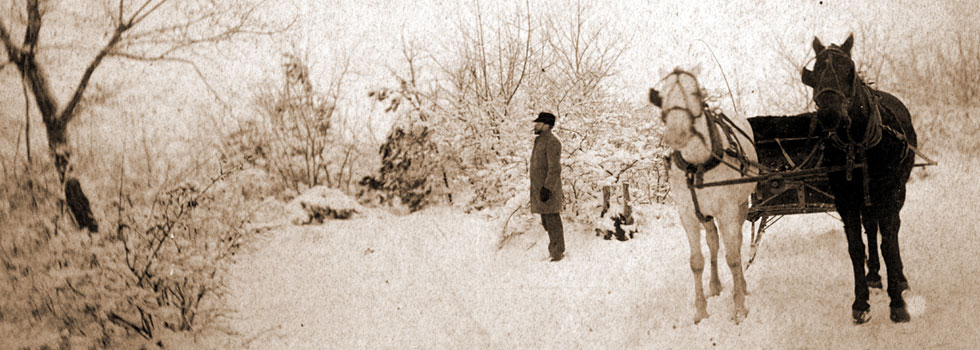
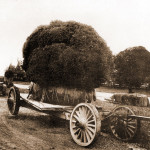
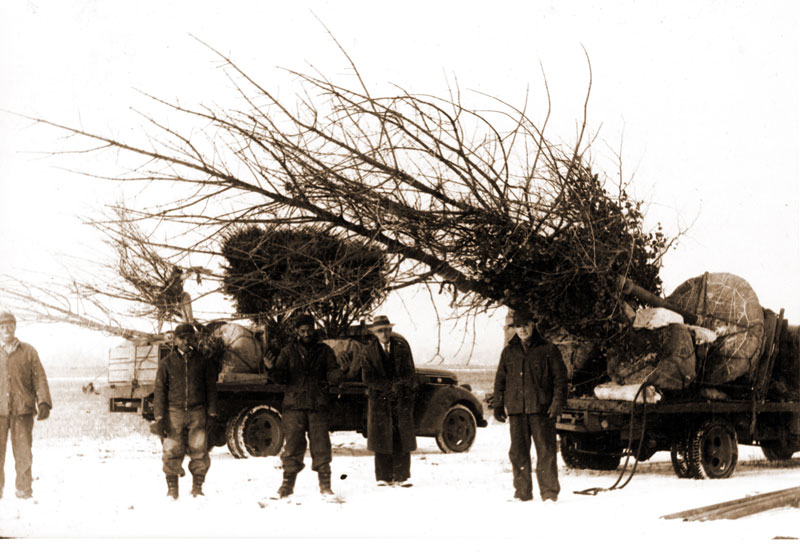
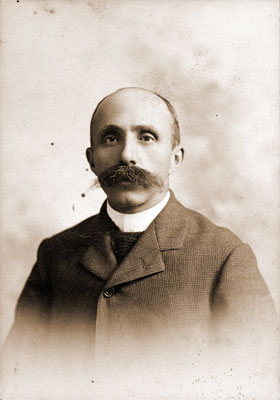
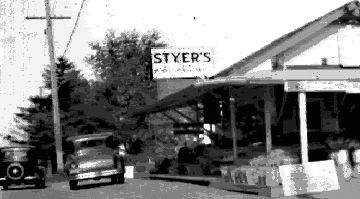
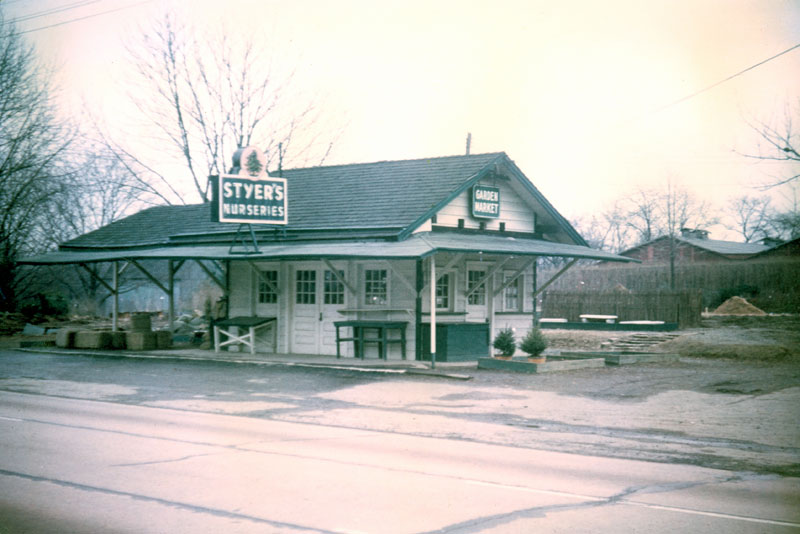
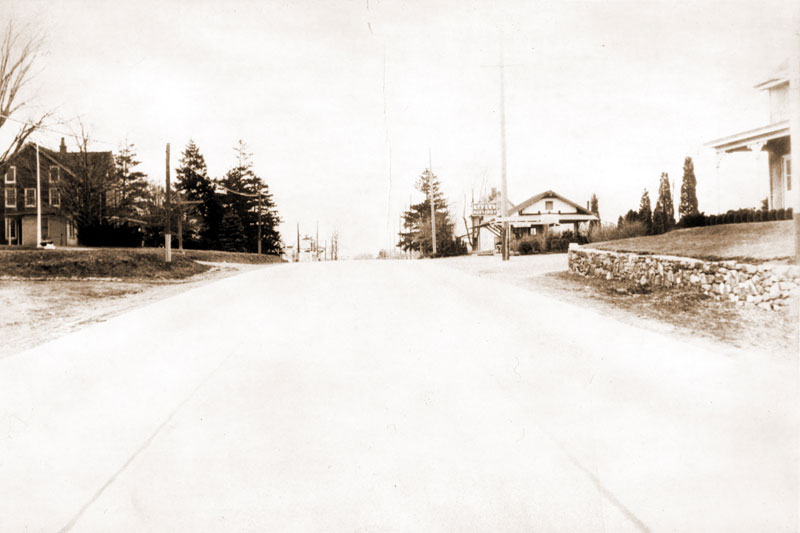
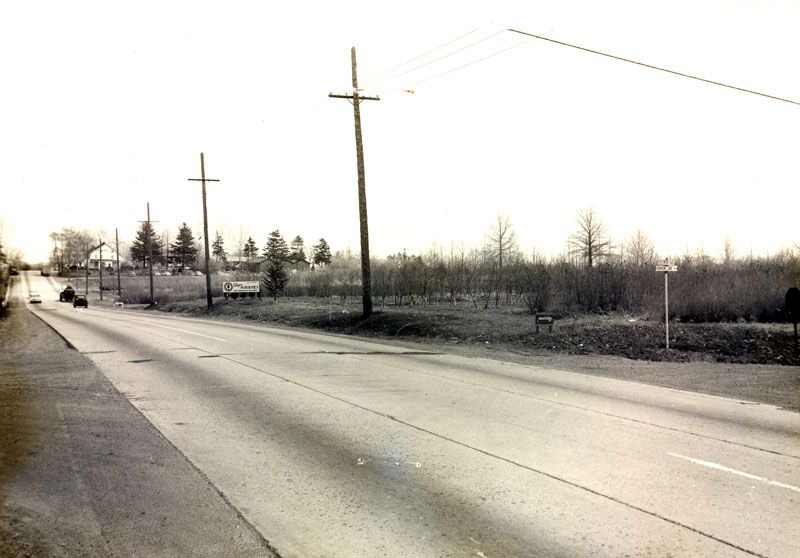

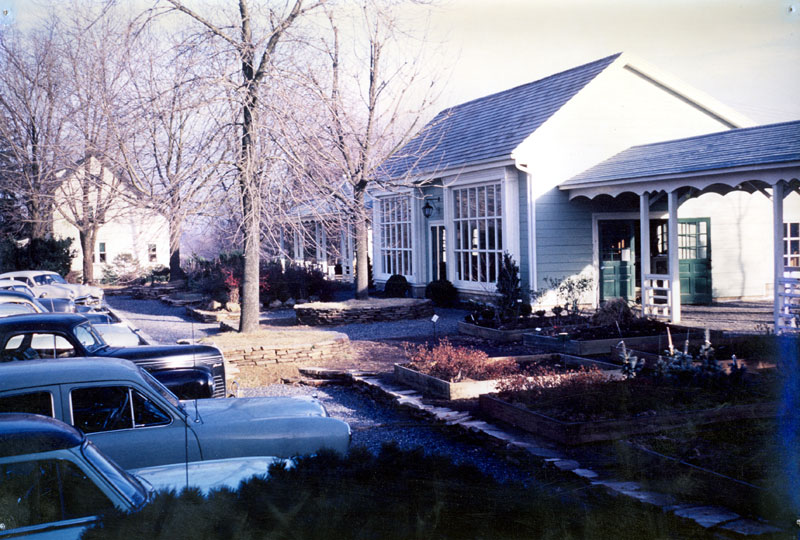
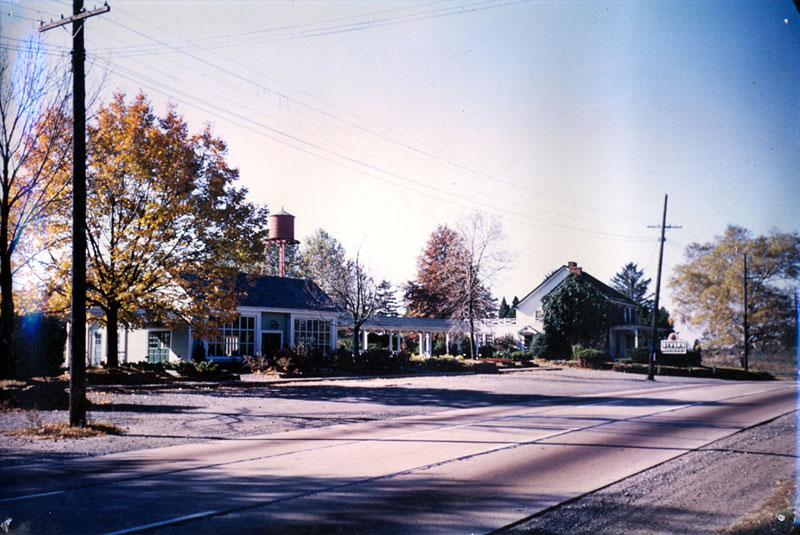
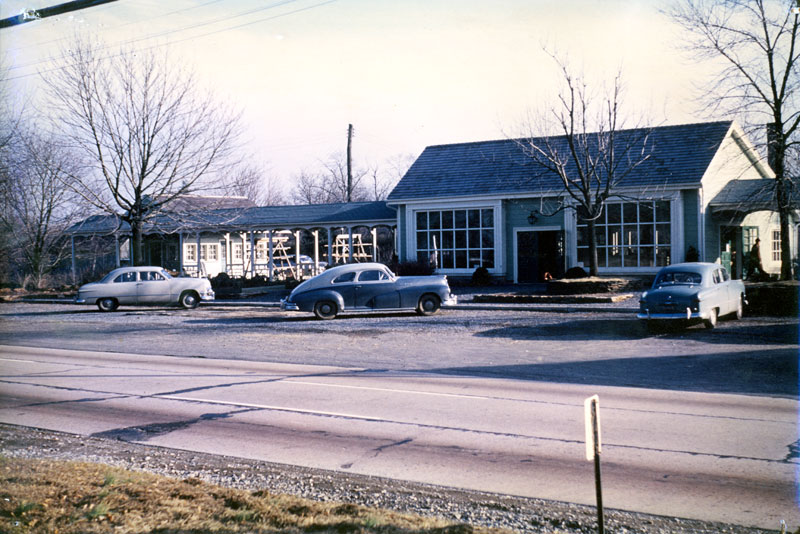
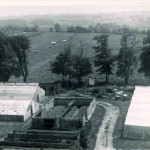
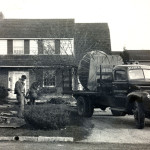
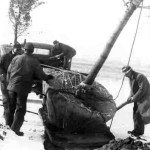
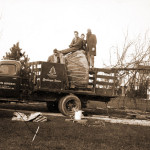
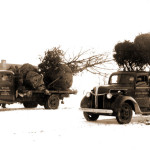
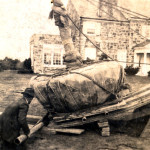
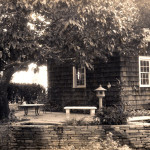
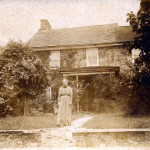
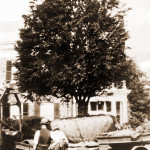
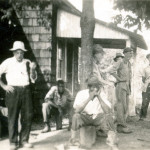
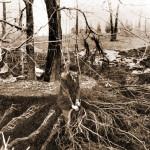
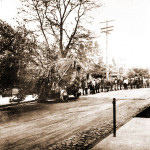
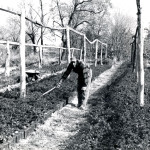
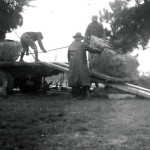
Thompson V. (Tommy) Palmer was my grandfather. My dad and his siblings grew up in a house on the Styers property until he was a teen (??? have to check date). I really appreciate your thorough history!
I hope this link works–it is a photo of a cat on the Styers property. https://www.facebook.com/photo.php?fbid=10152245914904553&set=a.10151920786999553&type=3&theater
I know this is probably hopeless, but, about 16 or 18 years ago I bought a fabulous red handled small hand trowel from Styers while I was taking course at Longwood. I have lost it. any idea or records how to find another? I loved Styers
Maybe you could find a picture of it online?
This is an amazing blog, Karen!!! One of my first landscape designer jobs (fresh from UD with a degree in Landscape Horticulture) was at J. Franklin Styer Nurseries in 1989, and I was fortunate to be part of the staff celebrating the 100 year anniversary of the nursery in 1990. I have never been to Terrain, but I hope this history is available to guests who likely do not realize the historical significance of that facility and plot of land.
Thanks again for posting!!!
Glad you found it useful!